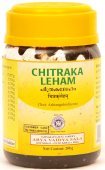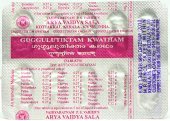Mishi, Miṣi, Miśī, Miśi, Misī: 12 definitions
Introduction:
Mishi means something in Hinduism, Sanskrit, Marathi. If you want to know the exact meaning, history, etymology or English translation of this term then check out the descriptions on this page. Add your comment or reference to a book if you want to contribute to this summary article.
The Sanskrit terms Miṣi and Miśī and Miśi can be transliterated into English as Misi or Mishi, using the IAST transliteration scheme (?).
In Hinduism
Ayurveda (science of life)
Nighantu (Synonyms and Characteristics of Drugs and technical terms)
Source: WorldCat: Rāj nighaṇṭu1) Misī (मिसी) is another name for Śatāhvā, an unidentified medicinal plant, according to verse 4.10-13 of the 13th-century Raj Nighantu or Rājanighaṇṭu. The fourth chapter (śatāhvādi-varga) of this book enumerates eighty varieties of small plants (pṛthu-kṣupa). Also see the description of the plant Miśreyā. Together with the names Misī and Śatāhvā, there are a total of twenty-four Sanskrit synonyms identified for this plant.
2) Miśi (मिशि) is mentioned as a synonym for Miśreyā, an unidentified medicinal plant possibly identified with Foeniculum vulgare (synonym Foeniculum capillaceum) or “fennel”, from the Apiaceae (Umbelliferae) or “carrot family” of flowering plants, according to verse 4.14-19. Also see Śatāhvā. Together with the names Miśi and Miśreyā, there are a total of fifteen Sanskrit synonyms identified for this plant.

Āyurveda (आयुर्वेद, ayurveda) is a branch of Indian science dealing with medicine, herbalism, taxology, anatomy, surgery, alchemy and related topics. Traditional practice of Āyurveda in ancient India dates back to at least the first millenium BC. Literature is commonly written in Sanskrit using various poetic metres.
Languages of India and abroad
Marathi-English dictionary
Source: DDSA: The Molesworth Marathi and English Dictionarymiśī (मिशी).—f A common term for the mustaches. 2 Applied to the feelers or tentacula of animals.
--- OR ---
miśī (मिशी).—f A teeth-tinging powder. See missī.
Source: DDSA: The Aryabhusan school dictionary, Marathi-Englishmiśī (मिशी).—f A term for the mustaches. miśīvara or miśāṃvara tāva dēṇēṃ To twin the mustaches in scorn or anger.
Marathi is an Indo-European language having over 70 million native speakers people in (predominantly) Maharashtra India. Marathi, like many other Indo-Aryan languages, evolved from early forms of Prakrit, which itself is a subset of Sanskrit, one of the most ancient languages of the world.
Sanskrit dictionary
Source: DDSA: The practical Sanskrit-English dictionaryMiśi (मिशि) or Miṣi (मिषि).—f.
1) Anise.
2) Spikenard.
Derivable forms: miśiḥ (मिशिः), miṣiḥ (मिषिः).
See also (synonyms): misi.
Source: Cologne Digital Sanskrit Dictionaries: Shabda-Sagara Sanskrit-English DictionaryMiśi (मिशि).—f. (-śiḥ-śī) 1. A sort of fennel, (Anethum panmorium.) 2. Indian spikenard. 3. Common anise. E. miś to sound, ki aff. and ṅīṣ optionally added; also miṣi misi, &c.
--- OR ---
Miṣi (मिषि).—f. (-ṣiḥ-ṣī) 1. Spikenard, (Valeriana jatamansi.) 2. A sort of fennel, (Anethum panmorium, &c.) E. mas to measure, in and ṅīṣ affs., sa changed to ṣa, and i substituted for the radical vowel; also misi, miśi, and with kan added miṣikā, &c.
--- OR ---
Misi (मिसि).—f. (-siḥ-sī) 1. A sort of fennel, (Anethum panmorium, Rox.) 2. Another kind, (A. sowa.) 3. Spikenard, (Valeriana jatamansi.) 4. A sort of lovage, (Ligusticum ajwaen.) 5. Common anise, (Pimpinella an sum.) E. mas to mete, aff. in and optionally ṅīṣ; the radical vowel changed to i, deriv. irr.; also miśi and miṣi .
Source: Cologne Digital Sanskrit Dictionaries: Cappeller Sanskrit-English DictionaryMisi (मिसि).—[feminine] [Name] of [several] plants.
Source: Cologne Digital Sanskrit Dictionaries: Monier-Williams Sanskrit-English Dictionary1) Miśi (मिशि):—f. or miśī (only [cf. Lexicographers, esp. such as amarasiṃha, halāyudha, hemacandra, etc.]) Anethum Panmori and Anethum Sowa
2) Nardostachys Jatamansi (cf. miṣikā)
3) a species of sugar-cane.
4) Miśī (मिशी):—f. or miśi (only [cf. Lexicographers, esp. such as amarasiṃha, halāyudha, hemacandra, etc.]) Anethum Panmori and Anethum Sowa
5) Nardostachys Jatamansi (cf. miṣikā)
6) a species of sugar-cane.
7) Miṣi (मिषि):—f. = misi (q.v.), [cf. Lexicographers, esp. such as amarasiṃha, halāyudha, hemacandra, etc.]
8) Misi (मिसि):—f. (only [cf. Lexicographers, esp. such as amarasiṃha, halāyudha, hemacandra, etc.]) Anethum Sowa and Panmori
9) Nardostachys Jatamansi
10) = aja-modā; = uśīrī (cf. miśi).
11) = uśīrī (cf. miśi).
Source: Cologne Digital Sanskrit Dictionaries: Yates Sanskrit-English Dictionary1) Miśi (मिशि):—[(śiḥ-śī)] 2. 3. f. A sort of fennel; Indian spikenard; anise.
2) Miṣi (मिषि):—[(ṣiḥ-ṣī)] 2. f. Spikenard; a sort of fennel; anise.
3) Misi (मिसि):—[(siḥ-sī)] 2. 3. f. A sort of fennel; spikenard; anise.
[Sanskrit to German]
Sanskrit, also spelled संस्कृतम् (saṃskṛtam), is an ancient language of India commonly seen as the grandmother of the Indo-European language family (even English!). Closely allied with Prakrit and Pali, Sanskrit is more exhaustive in both grammar and terms and has the most extensive collection of literature in the world, greatly surpassing its sister-languages Greek and Latin.
Kannada-English dictionary
Source: Alar: Kannada-English corpusMisi (ಮಿಸಿ):—
1) [noun] = ಮಿಶ್ರೇಯ [mishreya].
2) [noun] the plant Nardostachys jatamansi of Valerianaceae family, that yields a fragrant ointment; spikenard.
Kannada is a Dravidian language (as opposed to the Indo-European language family) mainly spoken in the southwestern region of India.
Nepali dictionary
Source: unoes: Nepali-English DictionaryMisī (मिसी):—n. cosmetic powder for polishing teeth;
Nepali is the primary language of the Nepalese people counting almost 20 million native speakers. The country of Nepal is situated in the Himalaya mountain range to the north of India.
See also (Relevant definitions)
Starts with: Mishi quiro, Mishika, Mishikri, Mishinnu, Mishisalai.
Query error!
Full-text: Naimishi, Mishika, Mishreya, Mardaci Mishi, Mici, Madhuramishi, Mishi quiro, Ravanachi-mishi, Misaruda, Amishi, Misha, Madhava, Cacari, Mishala, Shatahva.
Relevant text
Search found 13 books and stories containing Mishi, Miṣi, Miśī, Miśi, Misī, Misi; (plurals include: Mishis, Miṣis, Miśīs, Miśis, Misīs, Misis). You can also click to the full overview containing English textual excerpts. Below are direct links for the most relevant articles:
Kalka Dravya's Role in Niruha Basti Preparation: A Conceptual Analysis < [Volume 10, Issue 5: September-October 2023]
The Multidimensional Therapeutic Applications of Upanaha Sweda < [Volume 11, Issue 3: May-June 2024]
A Conceptual Study of Aahar and Vihar in Post Covid-19 Complication < [Volume 11, Issue 2: March-April 2024]
Rig Veda (translation and commentary) (by H. H. Wilson)
World Journal of Pharmaceutical Research
Pharmacognostic and pharmaceutical analysis of Panchatiktaghrita Guggulu. < [2022: Volume 11, October special issue 14]
A review on traditional uses and thereputic indications of anethum sowa < [2019: Volume 8, August issue 9]
Study on lekhana basti and gomutra hareetaki for uterine fibroids. < [2023: Volume 12, December issue 21]
International Ayurvedic Medical Journal
Tarunapalasha kshara yoga – a review < [2023, Issue 04, April]
An ayurvedic approach of jalodara < [2019, Issue 6, June]
Jatamansi (nardostachys jatamansi dc. ): insight of its mor-phology and its medicinal use in ayurveda < [2024, Issue 01. January]
Sushruta Samhita, volume 4: Cikitsasthana (by Kaviraj Kunja Lal Bhishagratna)
Agni Purana (by N. Gangadharan)
Related products
(+4 more products available)





